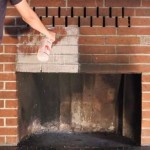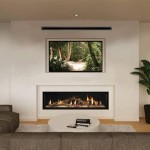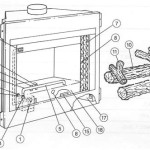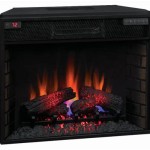Ethanol Fuel for Fireplaces: A Comprehensive Overview
Ethanol fuel has emerged as a popular alternative for powering fireplaces, offering a clean-burning and convenient option compared to traditional wood-burning or gas-powered systems. This article provides a comprehensive overview of ethanol fuel for fireplaces, examining its properties, benefits, safety considerations, and usage guidelines. Understanding these aspects is crucial for making informed decisions regarding fireplace selection and fuel management.
Ethanol, also known as ethyl alcohol or grain alcohol, is a renewable fuel source produced primarily through the fermentation of biomass, such as corn, sugarcane, or other agricultural products. The fermentation process converts sugars into ethanol and carbon dioxide. After fermentation, the ethanol undergoes distillation to increase its concentration and purification, resulting in a fuel suitable for various applications, including fireplaces. The ethanol used in fireplaces is typically denatured, meaning that additives have been introduced to render it unfit for human consumption. This denaturing process is often mandated by regulations to prevent the diversion of fuel ethanol for alcoholic beverage production.
Denaturing agents vary but commonly include substances like denatonium benzoate (Bitrex), a bitter-tasting compound, or other hydrocarbons. Importantly, these denaturants should not significantly alter the burning characteristics or safety profile of the ethanol fuel when used in approved fireplace designs. The primary goal is to eliminate the incentive for illicit consumption without compromising the fuel's performance.
The chemical formula for ethanol is C2H5OH. When ethanol burns completely, it ideally produces primarily carbon dioxide (CO2) and water vapor (H2O). This clean-burning characteristic is one of the major appeals of ethanol fuel for fireplaces. However, incomplete combustion can occur, especially in poorly ventilated spaces or with improperly designed fireplaces. In such cases, small amounts of other byproducts, such as carbon monoxide (CO), can be produced. It is therefore essential to use well-designed and properly maintained ethanol fireplaces and to ensure adequate ventilation in the room where the fireplace is operating.
The calorific value of ethanol is lower than that of propane or natural gas. This means that ethanol produces less heat per unit volume compared to these fuels. However, for many users, the heat output of ethanol fireplaces is sufficient for supplemental heating or creating ambiance. The heat output is also dependent on the design and size of the fireplace burner.
Key Point 1: Benefits of Using Ethanol Fuel in Fireplaces
Several benefits contribute to the increasing popularity of ethanol fuel for fireplaces. These advantages range from environmental considerations to practical convenience.
One of the most significant benefits is the reduced environmental impact compared to traditional wood-burning fireplaces. Ethanol is considered a renewable fuel source because it is derived from biomass. When ethanol burns, the carbon dioxide released is theoretically offset by the carbon dioxide absorbed by the plants used to produce the ethanol. This creates a closed-loop carbon cycle, leading to a net reduction in greenhouse gas emissions compared to fossil fuels. Wood-burning fireplaces, on the other hand, release carbon that was sequestered over decades or centuries, contributing to an increase in atmospheric carbon dioxide levels.
Another advantage is the clean-burning nature of ethanol fuel. When burned correctly, ethanol produces minimal soot, ash, or smoke. This eliminates the need for chimneys, vents, or elaborate flue systems, simplifying installation and reducing maintenance requirements. Traditional fireplaces require regular chimney cleaning to remove creosote buildup, which poses a fire hazard. Ethanol fireplaces do not generate creosote, making them significantly easier to maintain.
Ethanol fireplaces offer greater design flexibility compared to traditional fireplaces. Because they do not require venting, they can be installed in a wider range of locations, including apartments, condominiums, and homes without existing chimneys. This allows for creative and aesthetically pleasing fireplace designs, such as wall-mounted units, freestanding models, and tabletop fireplaces.
Finally, ethanol fireplaces are generally easy to use. They typically consist of a fuel reservoir or burner that is filled with ethanol fuel. The fuel is then ignited using a lighter or match. Some models feature adjustable flame controls, allowing users to regulate the heat output and flame height. Refilling the fuel reservoir is usually a straightforward process, and spills can be easily cleaned with water.
Key Point 2: Safety Considerations When Using Ethanol Fuel
While ethanol fireplaces offer numerous advantages, it is crucial to prioritize safety when using them. Ethanol is a flammable liquid, and improper handling or misuse can lead to accidents.
One of the most important safety precautions is to only use ethanol fuel specifically designed for fireplaces. Using other types of alcohol or flammable liquids can be extremely dangerous and may result in explosions or uncontrolled fires. The fuel should be stored in a cool, dry place away from heat sources and open flames. It is also essential to keep the fuel out of reach of children and pets.
When filling the fuel reservoir, it is important to avoid overfilling. Overfilling can cause the fuel to spill, which is a fire hazard. The reservoir should be filled to the recommended level, as indicated by the manufacturer. Spilled fuel should be cleaned up immediately with a damp cloth.
Never add fuel to a burning or hot fireplace. The heat can cause the fuel to ignite rapidly, leading to a flash fire. Always allow the fireplace to cool completely before refilling the fuel reservoir. It is also advisable to use a funnel when filling the reservoir to prevent spills.
Ensure adequate ventilation in the room where the fireplace is operating. While ethanol fireplaces produce minimal smoke, they do release carbon dioxide. Inadequate ventilation can lead to a buildup of carbon dioxide, which can cause drowsiness, headaches, and other health problems. Opening a window or using a ventilation fan can help to ensure adequate airflow.
Never leave a burning fireplace unattended. It is important to monitor the fireplace while it is in use and to extinguish the flame before leaving the room or going to sleep. A fireplace screen can be used to prevent sparks or embers from escaping.
Carbon monoxide (CO) detectors are highly recommended in homes with ethanol fireplaces. While ethanol fireplaces typically produce very low levels of CO, incomplete combustion can occur, especially in poorly ventilated spaces. A CO detector can provide an early warning of dangerous CO levels.
Regularly inspect the fireplace for any signs of damage or wear. Check the fuel reservoir, burner, and other components for cracks, leaks, or corrosion. Damaged fireplaces should be repaired or replaced to prevent accidents.
Key Point 3: Usage Guidelines and Maintenance
Following proper usage guidelines and implementing regular maintenance practices are essential for ensuring the safe and efficient operation of ethanol fireplaces.
Before using the fireplace for the first time, carefully read the manufacturer's instructions. The instructions will provide specific information on the operation, safety precautions, and maintenance requirements of the fireplace model. Adhering to these instructions is crucial for preventing accidents and ensuring optimal performance.
Only use the type of ethanol fuel recommended by the fireplace manufacturer. Different fireplace models may require different fuel formulations. Using the wrong type of fuel can damage the fireplace or create a safety hazard.
When lighting the fireplace, use a long-handled lighter or match to avoid burns. Keep your face and hands away from the flame. If the fireplace is difficult to light, consult the manufacturer's instructions or contact a qualified technician.
Adjust the flame height to the desired level using the fireplace's controls. Avoid setting the flame too high, as this can create excessive heat and increase the risk of accidents. Never attempt to modify the fireplace or its components in any way.
Extinguish the flame by following the manufacturer's instructions. Some models have a built-in snuffer, while others require the use of a separate tool. Never use water to extinguish an ethanol fire, as this can spread the fire and create a steam explosion.
Clean the fireplace regularly to remove any dust, debris, or spills. Use a soft cloth and mild detergent. Avoid using abrasive cleaners or solvents, as these can damage the fireplace's finish.
Empty the fuel reservoir periodically, especially if the fireplace is not used frequently. Stale fuel can become contaminated and may not burn properly. Dispose of the used fuel according to local regulations.
Inspect the fireplace regularly for any signs of damage or wear. Check the fuel reservoir, burner, and other components for cracks, leaks, or corrosion. Repair or replace damaged parts promptly to prevent accidents.
If you encounter any problems with the fireplace, consult the manufacturer's instructions or contact a qualified technician. Do not attempt to repair the fireplace yourself unless you are qualified to do so.
Proper storage of ethanol fuel is crucial. Store ethanol fuel in a tightly sealed container in a cool, dry, and well-ventilated place, away from direct sunlight, heat sources, and open flames. The container should be clearly labeled to indicate the contents and should be stored out of reach of children and pets.
Finally, ensure that everyone in the household is aware of the safety precautions and usage guidelines for the ethanol fireplace. This includes children, guests, and anyone who may be using the fireplace.
By adhering to these usage guidelines and maintenance practices, users can enjoy the benefits of ethanol fireplaces safely and efficiently. Responsible use and regular maintenance will prolong the lifespan of the fireplace and minimize the risk of accidents.

12l Bioethanol Fuel For Fireplaces 12x1l

2l Bioethanol Fuel For Fireplaces 2x1l

Bio Ethanol Vs Isopropyl What S The Best Fireplace Fuel American

E Nrg Bioethanol The Best Fuel For Your Ethanol Fire

Liquid Bio Ethanol Fireplace Fuel Ignis Clean Burning

Liquid Bio Ethanol Fireplace Fuel Ignis Clean Burning

E Nrg Bioethanol 2 Cartons The Best Fuel For Your Ethanol Fire Mad Design Group

1l Bioethanol Fuel For Fireplaces

Unscented Bioethanol Fireplace Fuel 4 X 5 Litres

Recommended Room Size For Bio Fire Buy Them Here
Related Posts








